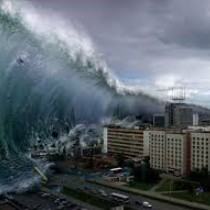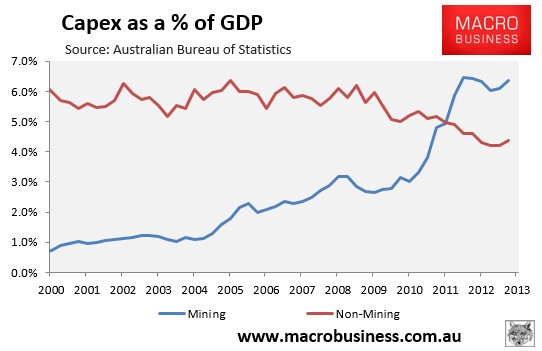
After last week’s prediction of endless ghost cities, Business Spectator’s Robert Gottliebsen (“Gotti”) goes firmly the other way today on a possible big rise in unemployment as a range of headwinds hit the Australian economy:
I do not think the Australian nation, treasury or the cabinet understands the magnitude of what is going to happen.
…enormous tidal waves are coming towards us not so much in calendar 2014 but in 2015 and especially in 2016 (the election year).
The biggest wave is the decline in the mining investment boom. Leaving aside maintenance and normal capital expenditure mining investment rose from around 2 to 3 per cent of GDP to around 7 per cent. It looks like falling back to its traditional levels as the election approaches. We are looking at 70 per cent size reductions in a countless number of contractors. Many will disappear. Remember this will not be apparent in the 2014 economic figures because there is still a lot of mining investment work to do…
Gotti is correct that the expected decline in mining-related investment will likely crunch employment, although the timing and ultimate size of the contraction is uncertain. I’m not sure it’s fair to suggest that the Treasury and RBA no longer understand, both have been furiously promoting stimulus policies for quite a while now.
According to recent research by the RBA, mining-related activity (including activities associated with mining capex) accounting for around 6.5% of total jobs across the Australian economy, meaning that a significant decline in capex to longer-run norms would have a material impact on overall employment.
Moreover, there would appear to belimited scope for non-mining capex to fill the employment void, given mining’s much bigger relative starting size (see next chart).

Back to Gotti:
At the same time as the mining investment collapse – 2015 and 2016 – we are going to see a second wave. Higher gas and power costs. The price of gas will double in eastern states – if it is available. Because the raw material is only part of the cost in the retail sector, the rise to consumers will be much less. But in industry, where the gas raw material is a bigger slice of the cost, the effect will be to shut many plants.
And it looks like there are more power price rises in the pipeline.
Similar issues have been raised by me recently. In its haste to rubber stamp new LNG export projects and earn a quick buck through the Petroleum Resource Rents tax, the Federal Government has effectively allowed a domestic gas shortage to develop, which now threatens the livelihood of domestic industry, as well as forcing up costs for households. For every dollar earned from exporting gas to Asia, Australia risks losing much more in lost value-added local production, which will ultimately impact jobs at the same time as the mining investment boom unwinds.
Back to Gotti:
Festering in the Coalition for decades is the deep belief that the motor industry should be shut, given that the only way in can be competitive when the Australian dollar is above 80 to 85 US cents is government subsidies.
That was certainly a correct policy as we headed into the mining investment boom…
But in 2013 it becomes [another] tidal wave equal in power to both mining investment and retail. And the motor industry tidal wave hits Australia at the same time as the other[s]…
It’s hard to fault Gotti’s logic given it is my own. Whether you believe in automotive assistance or not, the fact remains that letting Holden depart by 2016, and in the process ensuring the collapse of many parts makers and Toyota, is risky when employment is already facing a major hit as Australia goes off the mining capex cliff. The time to be pulling back automotive assistance was during the boom, not the bust.
Gotti’s also nominates rising retail costs and falling public sector employment as other tidal waves of unemployment and estimates Australia is facing between 350,000 and 500,000 of job losses across the economy as these headwinds strengthen. His forecasts are clearly a wild guess but the employment headwinds are strong enough to demand policy makers utmost attention and concern.

